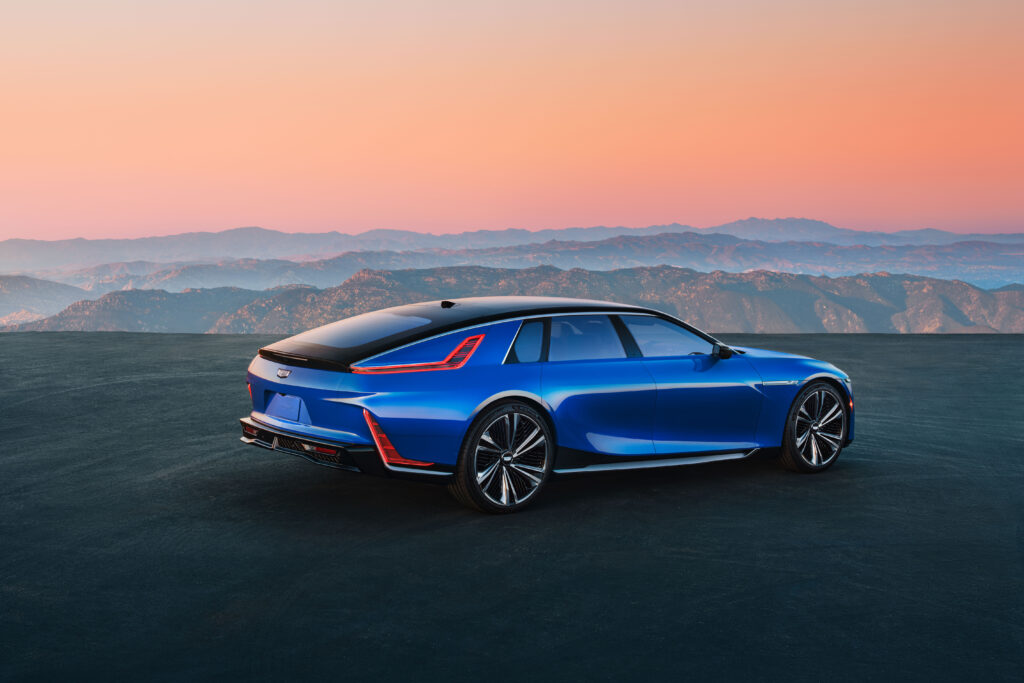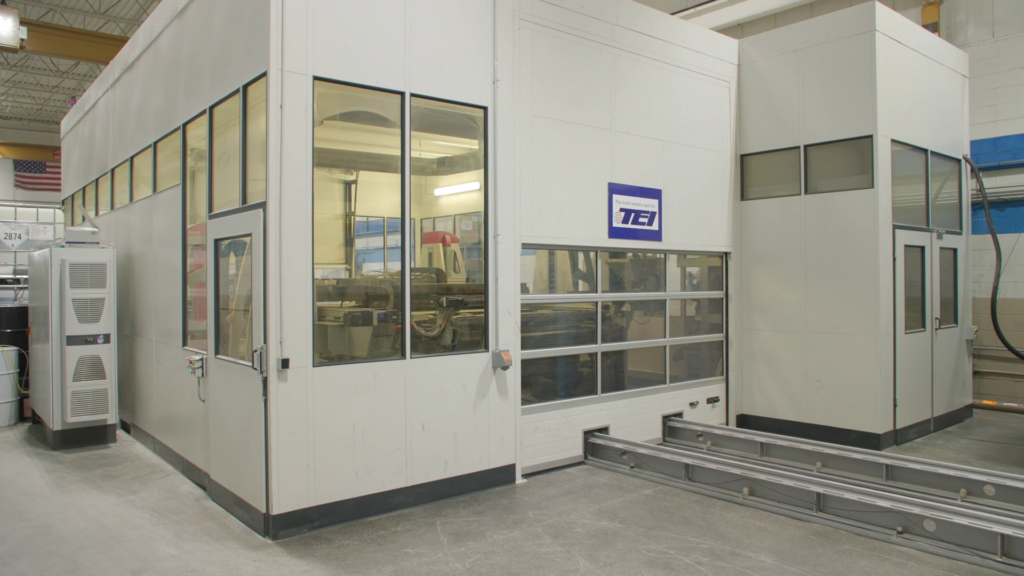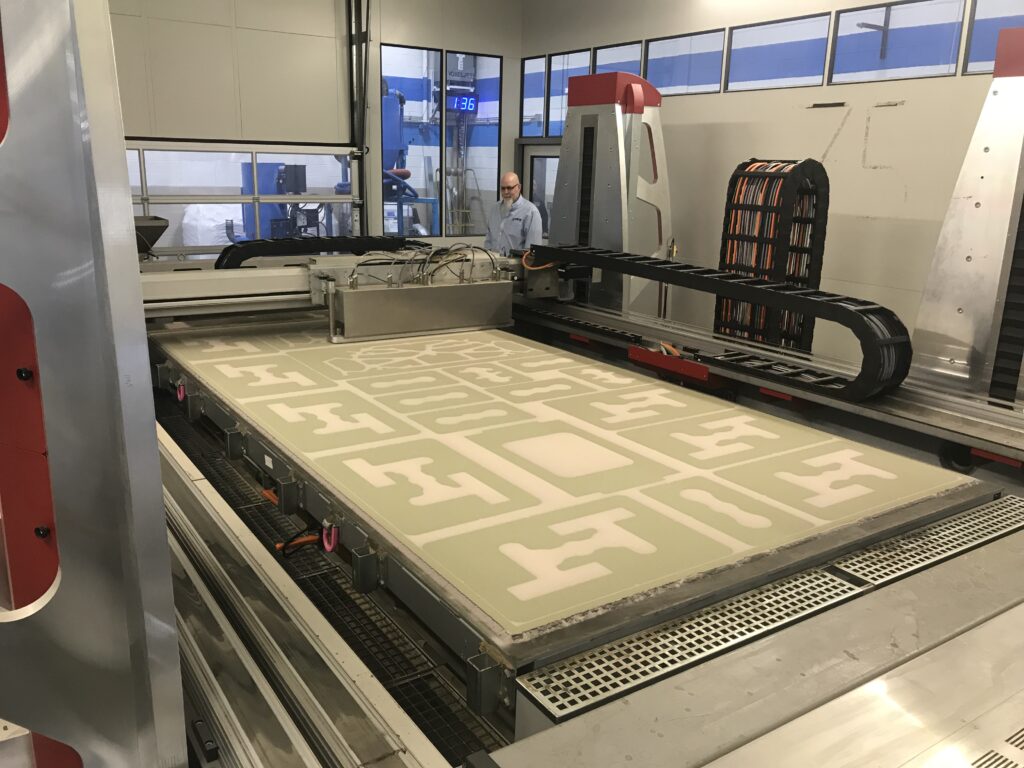German 3D printer manufacturer voxeljet AG (NASDAQ: VJET) has been enlisted in the production of the Cadillac CELESTIQ from GM. In particular, its U.S. customer, Tooling & Equipment International (TEI), is utilizing the world’s largest sand 3D printer, the VX4000 from voxeljet, to 3D print sand cores the series production of large-format, weight-saving structural components for the CELESTIQ.
The CELESTIQ is anticipated to be a potential game changer for luxury cars and 3D printing. With over 100 3D printed parts, each version of the electric vehicle (EV) will be hand built, carrying a $300,000 price tag as a part of a limited series. Additive manufacturing (AM) is ideal for the task, given its ability to produce high-performance components at a lower cost compared to traditional production techniques for luxury automobiles.

Rear 3/4 view of Cadillac CELESTIQ on a plateau overlooking mountains in the background. Image courtesy of GM/Cadillac.
Sand casting can be a crucial technology for producing large metal components, particularly for limited series such as this, where stamping is not a cost competitive. A GM supplier, TEI is using the VX4000 to 3D print a total of 51 sand cores to cast large, weight-saving elements for the underbody structure of the CELESTIQ. GM is replacing what would have been between 30 and 40 stamped components with six large precision sand-cast aluminum parts.
To produce the complex pieces as economically and lightly as possible, TEI 3D printed the inner cores. As a result, stiffening features can be incorporated into hollow sections of the core, which is not economically practical with conventional manufacturing. With the VX4000, TEI is able to mass produce hundreds of inner cores for several vehicles in a single night. Once printed, the cores are smoothed and given a fireproof coating before they are placed in sand molds and cast.
“By eliminating tools and taking advantage of the large build volume of the VX4000 printers, we can significantly reduce delivery times and produce lightweight components with optimized topologies. This would not be possible in the conventional way,” explains Oliver Johnson, President of TEI.
The machine measures a massive 4 x 2 x 1 meters and, after partnering with voxeljet in 2018, TEI has been turning out over 500,000 liters of 3D printed sand annually. This led TEI to acquire a third VX4000, making it the only US company to own three units and enabling it to feasibly turn out 2.5 million liters per year.

The VX4000 at Tooling & Equipment International (TEI). Image courtesy of Tooling & Equipment International (TEI).
Whereas Desktop Metal (NYSE: DM) may hold the largest market share for sand 3D printers, voxeljet makes the largest versions of these machines. Incidentally, the binder jetting technology of each were initially derived from the same MIT licenses. Given the merger and acquisition activity of the last couple of years, voxeljet may be an acquisition target for Desktop, which is pushing its own robotic arm-based sand 3D printer.
As GM preps to roll out less than 1,000 units in 2024, we will surely hear from more suppliers to the auto giant that will be participating in the CELESTIQ project. We’ll also learn more about what AM technologies will be deployed. So far, we know that HP will be involved. One name we can guess to be in the mix is Divergent Technologies, which claims that it is working with eight of the top 10 automotive original equipment manufacturers.
Also worth considering is what the CELESTIQ means in the grand scheme of manufacturing, 3D printing, and automotive. Though Cadillac has traditionally been framed as a luxury brand, $300,000 is high price for a company that sells models for much less than $100,000. This new approach, along with the use of digital production and hand-craftsmanship, suggests a paradigm shift in the automotive industry.
As the world shifts away from fossil fuels and struggles to find replacement energy sources, will ordinary people still be able to afford to own their own cars? Or will new models of leasing, ride-sharing, and light e-mobility vehicles (e.g., scooters) replace that concept? It’s difficult to imagine the U.S. foregoing its love of cars altogether.
Relatedly, we have to wonder if AM will ever truly reach mass production levels or if, instead, all manufacturing will be reserved for a combination of cheap necessities for the masses and high-end luxuries for the upper middle class and above. Such a reality may take begin to take shape as peak resource use on the planet reveals itself more clearly.
Subscribe to Our Email Newsletter
Stay up-to-date on all the latest news from the 3D printing industry and receive information and offers from third party vendors.
You May Also Like
UpNano Launches 2PP 3D Printing Service with New NanoPro VT Printer
UpNano, an Austrian company specializing in two-photon polymerization (2PP) additive manufacturing (AM), has launched a service bureau that will offer high-volume output of microscale parts. The new service, NanoPro, will...
Materialise Updates Magics and Partners with BLT at Formnext 2024
At this year’s Formnext, 3D printing software and services pioneer Materialise, unveiled a series of software updates designed to enhance customization capabilities in 3D printing for its users. The announcement...
HP’s New Materials, Tools, and Collaborations to Drive 3D Printing Forward at Formnext 2024
At Formnext 2024, HP unveiled several key developments aimed at advancing additive manufacturing (AM), with new materials, workflow optimization tools, and expanded metal printing capabilities. These announcements reinforce HP’s strategy...
Farsoon at Formnext: What’s New in 3D Printing for 2024
With Formnext 2024 underway in Frankfurt, Farsoon Technologies (SHA: 688433) is showcasing a series of developments unveiled in the lead-up to the event. From advancing food-safe 3D printing for the...





































